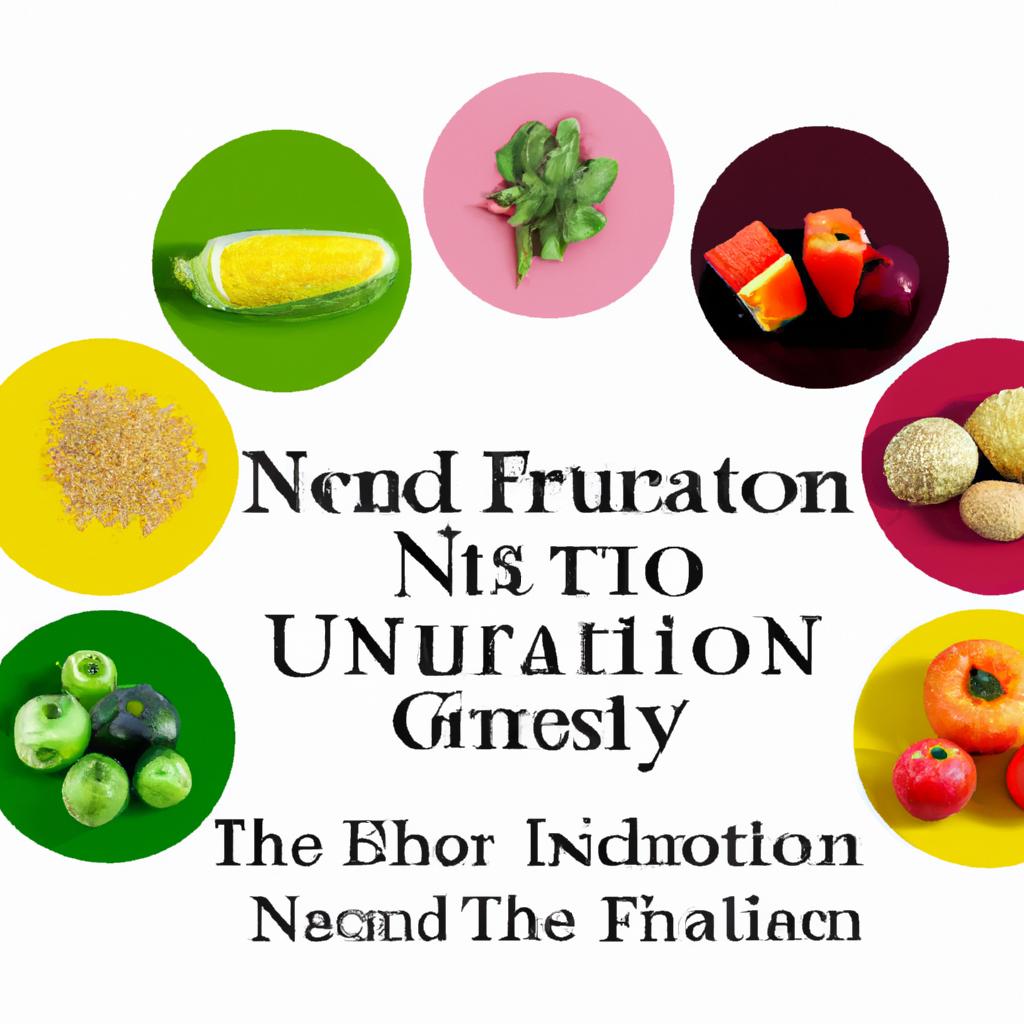Building Health: The Vital Role of a Balanced Diet in Everyday Living

In a world bustling with fast-paced lifestyles and instant gratification, the significance of a balanced diet often fades into the background, overshadowed by fleeting trends and convenient choices. Yet, at the heart of our physical and mental well-being lies an age-old truth: the foundation of a healthy life is built upon the foods we choose to nourish our bodies. “Building Health: The Vital Role of a Balanced Diet in Everyday Living” delves into the intricate relationship between diet and overall wellness, exploring how our daily choices can fortify our health, enhance our energy levels, and improve our resilience against the challenges of modern life. From the vibrant colors of fresh produce to the robust flavors of whole grains, we will embark on a journey to understand not just what to eat, but how those choices shape our existence. Join us as we uncover the essential components of a balanced diet and illuminate the path to a healthier, more fulfilling life.
The Foundations of Nutrition: Understanding Essential Food Groups
Understanding the essential food groups is fundamental to crafting a well-balanced diet, which serves as the backbone of our overall health. These food groups are categorized into various segments that provide distinct benefits to our bodies. The primary groups include:
- Fruits and Vegetables: Bursting with vitamins, fiber, and antioxidants.
- Grains: A vital source of carbohydrates and energy, particularly whole grains that offer additional nutrients.
- Protein: Essential for muscle development and repair, found in both animal and plant-based sources.
- Dairy: Important for calcium and vitamin D, supporting bone health.
- Fats: Necessary for cellular function, emphasizing healthy fats from sources like avocados and nuts.
The variety within these categories allows for an exciting range of meal choices, ensuring that nutritional needs are met while also catering to culinary preferences. To understand their contributions better, consider this simple overview of how these food groups work together:
| Food Group | Main Benefits | Recommended Servings |
|---|---|---|
| Fruits and Vegetables | Boost immunity and digestion | 5-7 servings daily |
| Grains | Energy source and fiber | 3-6 servings daily |
| Protein | Muscle repair and growth | 2-3 servings daily |
| Dairy | Bone health and strength | 2-3 servings daily |
| Fats | Cellular function and energy | Use in moderation |

Mindful Eating: Cultivating a Relationship with Food for Better Health
In our fast-paced lives, we often overlook the simple yet profound experience of eating. Mindful eating encourages us to slow down and pay attention to what is on our plates, allowing us to cultivate a deeper connection with our food. By focusing on the flavors, textures, and aromas, we can transform our meals into more than just a source of sustenance. This practice not only enhances our enjoyment of food but also helps us recognize our body’s hunger and fullness cues, leading to better food choices and ultimately improved health.
To begin this journey towards a more harmonious relationship with food, consider integrating the following practices into your daily routine:
- Eliminate Distractions: Turn off screens and put away your phone during meals.
- Chew Slowly: Take smaller bites and savor each morsel to truly enjoy your food.
- Express Gratitude: Take a moment to appreciate the sources of your food, whether it’s the farmers, the land, or nature itself.
- Listen to Your Body: Tune in to how your body feels during and after eating to understand its needs better.
By incorporating these approaches, you may witness a shift not only in your relationship with food but also in your overall well-being. Consider keeping a mindful eating journal to track your progress and reflections on this transformative experience:
| Date | Meal | Thoughts and Feelings |
|---|---|---|
| 2023-10-01 | Breakfast | Felt energized by enjoying a colorful fruit smoothie. |
| 2023-10-02 | Lunch | Noticed fullness earlier than usual while eating a hearty salad. |
| 2023-10-03 | Dinner | Savored each bite of roasted vegetables and whole grains. |

Practical Tips for a Balanced Plate: Easy Strategies to Enhance Your Diet
Creating a balanced plate isn’t just about portion sizes; it’s also an opportunity to introduce a variety of flavors and nutrients into your meals. **Start by incorporating a rainbow of fruits and vegetables** into your diet. Each color represents different vitamins and minerals, contributing to your overall health. Aim for at least three different colors on your plate for lunch and dinner. Additionally, consider **diversifying your protein sources**. Instead of always reaching for chicken or beef, try incorporating legumes, tofu, or fish, which can provide essential fatty acids and fiber that your body needs.
Another effective strategy is to **make whole grains your go-to option** whenever possible. Opt for brown rice, quinoa, or whole wheat pasta instead of their refined counterparts. This simple switch can greatly enhance your fiber intake, which is crucial for digestive health. When it comes to snacking, choose **nutrient-dense options** such as nuts, seeds, or yogurt instead of processed snacks. To help you visualize the balance on your plate, here’s a helpful guide that categorizes various food items:
| Food Group | Examples |
|---|---|
| Fruits | Apples, Berries, Oranges |
| Vegetables | Broccoli, Carrots, Spinach |
| Proteins | Beans, Chicken, Salmon |
| Whole Grains | Brown Rice, Quinoa, Whole Wheat Bread |
| Dairy Alternatives | Greek Yogurt, Almond Milk |
Implementing these practical tips not only leads to a balanced diet but also brings creativity to your cooking. Explore new recipes to **keep your meals exciting** and prevent culinary boredom. For example, try making colorful stir-fries, vibrant salads, or nutritious smoothies that combine all food groups. By making each meal an opportunity for exploration, you’ll find it easier to maintain a balanced diet, enjoy the process, and develop healthier eating habits for life.
To Conclude
the journey toward building health through a balanced diet is not merely a destination, but a way of life—a mosaic crafted from the daily choices we make. Each nutrient-rich meal serves as a brushstroke in the vibrant masterpiece of our well-being, shaping our energy, mood, and longevity. As we navigate the bustling currents of modern living, let us remember that nourishing our bodies is a profound act of self-care. By embracing a variety of foods, savoring the flavors nature has to offer, and remaining mindful of our needs, we not only enhance our personal health but also lay the foundation for a future filled with vitality and resilience. So, as you take the next step on your wellness journey, let your plate tell the story of balance and harmony, celebrating the beautiful relationship we share with food.





